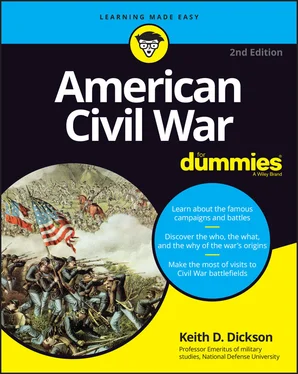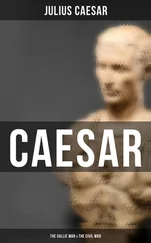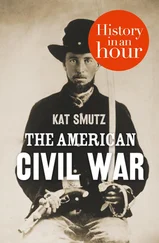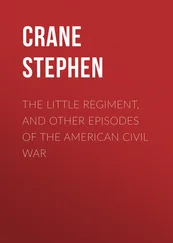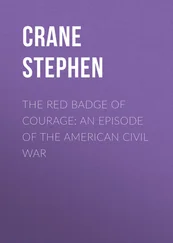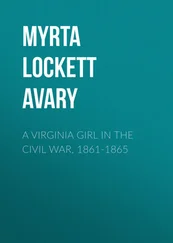Keith D. Dickson - American Civil War For Dummies
Здесь есть возможность читать онлайн «Keith D. Dickson - American Civil War For Dummies» — ознакомительный отрывок электронной книги совершенно бесплатно, а после прочтения отрывка купить полную версию. В некоторых случаях можно слушать аудио, скачать через торрент в формате fb2 и присутствует краткое содержание. Жанр: unrecognised, на английском языке. Описание произведения, (предисловие) а так же отзывы посетителей доступны на портале библиотеки ЛибКат.
- Название:American Civil War For Dummies
- Автор:
- Жанр:
- Год:неизвестен
- ISBN:нет данных
- Рейтинг книги:4 / 5. Голосов: 1
-
Избранное:Добавить в избранное
- Отзывы:
-
Ваша оценка:
- 80
- 1
- 2
- 3
- 4
- 5
American Civil War For Dummies: краткое содержание, описание и аннотация
Предлагаем к чтению аннотацию, описание, краткое содержание или предисловие (зависит от того, что написал сам автор книги «American Civil War For Dummies»). Если вы не нашли необходимую информацию о книге — напишите в комментариях, мы постараемся отыскать её.
American Civil War For Dummies,
American Civil War For Dummies
American Civil War For Dummies — читать онлайн ознакомительный отрывок
Ниже представлен текст книги, разбитый по страницам. Система сохранения места последней прочитанной страницы, позволяет с удобством читать онлайн бесплатно книгу «American Civil War For Dummies», без необходимости каждый раз заново искать на чём Вы остановились. Поставьте закладку, и сможете в любой момент перейти на страницу, на которой закончили чтение.
Интервал:
Закладка:
Taking Office: Lincoln’s First Inaugural Address
On March 4, 1861, Abraham Lincoln took the oath of office to become the 16th president of the United States. As all presidents have done before and since, he swore an oath to “preserve, protect, and defend the Constitution of the United States.” Ironically, the Constitution no longer existed in seven Southern states. Lincoln used his oath as the basis for his message to the nation and to those seven states. He made four points:
Secession was illegal and unjustified.
The seceded states were still in the Union.
No federal troops would be sent against the states, nor would the federal government interfere with slavery where it already existed.
The government would “hold, occupy, and possess” all federal property in the seceded states.
In essence, Lincoln told the Confederacy that the U.S. government would take no aggressive action against it. But if the Confederacy attacked federal property (obviously referring to Sumter and Pickens), the government would take action. The ball was now in the Confederacy’s court.
The Sumter crisis renewed
The situation wasn’t as simple as Lincoln made it appear in his inaugural address. Almost as soon as he arrived at the White House for his first day of work, Lincoln received an urgent message from Major Anderson at Fort Sumter. Anderson reported his food supplies would last about 40 more days. After that, he would have to give up the fort. The strength of Confederate batteries now covering the fort and the approaches to the harbor would make any attempt to reinforce or resupply impossible. This was an awkward moment; the new president had just committed the government to “hold, occupy, and possess” Sumter. And now it looked as though the fort would have to be given up anyway. Politically, such a scenario was unthinkable. Now, instead of waiting the Confederacy out, something would have to be done. The danger was that a misstep would lead to war, with the North standing before the world as the aggressor.
To make matters worse, the new Secretary of State William Seward, the man who thought he should have been elected president, began leaking information to the press and to pro-Southern acquaintances that Lincoln would not hold on to Sumter after supplies ran out. History shows that some things in Washington never change. The information, of course, reached its intended audience, but Confederate President Davis decided to wait and see. If anything, time was on his side at this point. Nevertheless, he knew that his military situation was even more precarious than Lincoln’s was. Davis needed as much time as possible to establish some sort of credible military force in the coming days.
The decisions that led to war
Over the next month, Lincoln and his advisors wrangled over what to do. General Winfield Scott, the senior military officer, saw no chance to gather enough men, ships, and ammunition to relieve the fort before Anderson’s food ran out. He therefore recommended that the fort be given up.
Close to despair, Lincoln granted a request from his postmaster general for a special meeting. Montgomery Blair proposed a plan to Lincoln: Resupply the fort secretly, with Blair’s brother-in-law as the leader of the expedition. The plan called for several support ships to arrive secretly outside Charleston harbor. Tugs working under cover of darkness would ferry the men and supplies to the fort. Lincoln liked the idea and gave instructions to the War Department to carry out the plan.
Almost immediately, nothing went right, and Lincoln began to have second thoughts about the secret resupply mission. Lincoln then notified the governor of South Carolina that he intended to resupply the fort. He had two conditions: If the relief ships were not fired on, they would only offload food. If fired upon, the ships would offload food, ammunition, and troops. At the same time, Lincoln sent a message to Anderson informing him of the resupply plan and instructing him to hold out as long as possible. In the same message, the president gave Anderson the authority to surrender the fort if the situation made it necessary. Anderson must have found those instructions confusing. On one hand, he was to hold out as long as possible; on the other hand, he could surrender the fort. Essentially, Lincoln had placed the decision for peace or war in the hands of an army major.
Now it was Davis’s turn to sweat. Davis could not allow the federal government to resupply Sumter without a fight. The Confederacy had to demonstrate to the world that its independence was legitimate. He ordered the commander of the Confederate forces in Charleston, General P.G.T. Beauregard, to resist any efforts to resupply Sumter. A few days later, responding to popular pressure to do something about Sumter, Davis instructed Beauregard to demand the fort’s immediate surrender and to fire on the fort if the demand was refused. On April 11, three Confederate officers, one a former senator with the new rank of colonel, made a visit to Fort Sumter. With proper military courtesy, the group presented Major Anderson with the formal surrender demand. Anderson refused to surrender but made it clear that by April 15 there would be no more food, and he would give up the fort. Yet they both knew that some of the ships of the relief expedition had arrived that night but without the tugs necessary to transfer supplies. The Confederate officers returned to Sumter at 12:45 a.m. for Anderson’s final answer. Again he refused to surrender until his food ran out. Given this reply, the Confederate officers responded that the fort would be fired on in one hour.
Firing the First Shot
At 4:30 a.m. the signal gun fired, its shell exploding 100 feet squarely above the fort (see Figure 3-1). A furious artillery barrage began and lasted for 34 hours. Although exploding shells caused widespread fires within the fort, neither side did any serious damage, nor was anyone killed or injured. On the 14th of April, with no food and little gunpowder left to fire his cannons, Anderson surrendered Fort Sumter. His garrison fired a salute to the flag (in the process killing one soldier and wounding five accidentally) and was picked up by the ineffectual relief expedition.
Calling for the 75,000 and another secession: The upper South
The day following the bombardment of Sumter, April 15, Lincoln declared the seven states of the Confederacy in rebellion and issued an order for 75,000 volunteers to serve 90 days. This call went to every state still in the Union. Upon receipt of this order, Virginia, North Carolina, Tennessee, and Arkansas seceded and began efforts to join the Confederacy. During the post-election crisis, most of these states had opened conventions like the other Southern states but had refused to make any decision on secession. The delegates to these conventions held long and rancorous debates over whether secession was justified. Many placed all hope on several attempts at a last-minute compromise or any indication that the Republicans would ease their position on slavery.
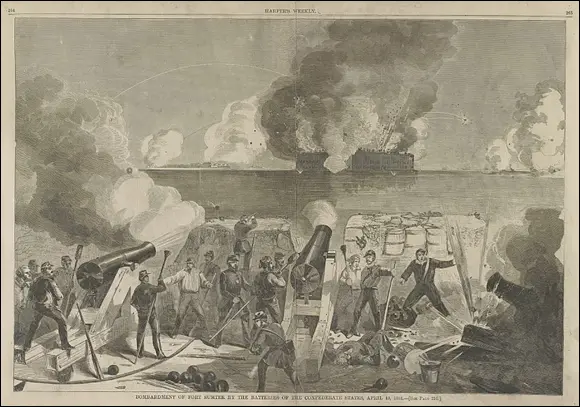
Library of Congress Prints and Photographs Division [LC-DIG-ppmsca-35361]
FIGURE 3-1:The firing on Fort Sumter.
DOUBLEDAY UP TO BAT
Captain Abner Doubleday, second in command at Fort Sumter, aimed and gave the command to fire the first Union cannon shot of the Civil War. Although he became a major general, commanding a division, Doubleday’s name is more associated with baseball rather than the Civil War. Doubleday was believed to be the inventor of baseball in Cooperstown, New York, in 1839, a claim now discounted.
Читать дальшеИнтервал:
Закладка:
Похожие книги на «American Civil War For Dummies»
Представляем Вашему вниманию похожие книги на «American Civil War For Dummies» списком для выбора. Мы отобрали схожую по названию и смыслу литературу в надежде предоставить читателям больше вариантов отыскать новые, интересные, ещё непрочитанные произведения.
Обсуждение, отзывы о книге «American Civil War For Dummies» и просто собственные мнения читателей. Оставьте ваши комментарии, напишите, что Вы думаете о произведении, его смысле или главных героях. Укажите что конкретно понравилось, а что нет, и почему Вы так считаете.
